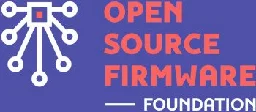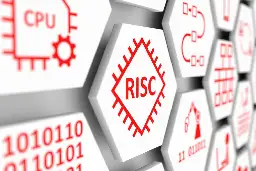Libre Hardware
- Any MNT Reform laptop owner out there for a few questions?
I have a terrible el-cheapo 14" HP laptop that I bought from a big-box store a few years ago as an emergency replacement for a laptop that died on me on the road while visiting a customer. I literally went to the store 5 minutes before it closed, bought any laptop they had, loaded Linux on it at the hotel and transferred my files from the dead laptop overnight, then did my presentation the next morning.
The trouble is, that laptop is VERY Linux unfriendly. I've put up with it for years because I don't like to throw things away, but I just can't stand the regular AMDGPU driver crashes and the broke-ass wifi-cum-bluetooth Realtek chipset anymore.
So I'm on the market for a good Linux laptop. I'm not a demanding user - I use that HP laptop to edit videos and do CAD and I'm okay with it - I'm very comfortable with anything Linux and I can code my way around problems.
I'm really tempted to get a MNT Reform laptop: I like the LiFePo4 battery cells a lot, it's solid, it's open hardware, it has a trackball and I love trackballs, it's highly hackable, and I'd like to support the MNT Research guys. And I'm old enough and the kids have been out of the house long enough that money is no object.
But a couple of things are holding me back. Maybe there are MNT Reform owners here who could shed some light on the following questions:
-
I don't know much of the ARM ecosystem, and what to expect from what processor / SoC. So I'm thinking of going with the highest end RK3588 32GB / 256GB CPU module offered by MNT. Would this at least match the performances of my stupid HP laptop's Ryzen 5 CPU in terms of real-world performances?
Or put another way: should I expect to take a hit when encoding my videos or doing big CAD models compared to this already slow laptop, or can I reasonably expect the MNT Reform to at least not be a regression.
Side question (yes, I know it should be obvious, but asking is better than guessing): I assume the "32GB / 256GB" in the CPU module's denomination is for 32GB of RAM and 256GB of onboard flash. Meaning I'd have that much disk space without needing to add a NVMe SSD card. Correct?
-
The keyboard layout looks all shades of terrible. I'm flexible with anything but not keyboard layouts - and especially those keyboard that don't put the left SHIFT and CTRL at the bottom where they belong, or have a split space bar.
The Reform's keyboard ticks all the wrong boxes for me in that respect: I can tell rightaway that it's going to fight my typing muscle memory all the time and forever, because I sure ain't gonna get used to it.
Can I remap the keys so I can at least I can swap CTRL and whatever that key is at the bottom left, and make the 3 buttons that replace the space bar act as a space bar? Then it's just a matter of putting a sticker on the keys and gluing the space bar keycaps together somehow.
-
I seem to recall some years ago that if the laptop was left off and unplugged for long enough - like 2 weeks IIRC - it would drain the cells and kill them because there was no under-voltage protection. Less dramatically but equally annoyingly, you couldn't leave it unplugged for a few days and expect to find it fully charged when you needed it most.
Does it still do that? Or has the hardware been fixed - or maybe there's a "Turn really off" option in the little side computer that runs the mini OLED display?
Mind you, I can always drill a hole and add a physical switch to disconnect the cells, but I'd rather not do that.
- Is there an option to limit the charge? Keeping Li-ion cells constantly at 100% (or worse, charging all the time) when the laptop is plugged in isn't ideal. I'd rather it kept the cells charged around 80% . And I mostly use my laptops plugged in.
- Can I remove the cells and use the laptop plugged in? I might eschew the cells altogether, because I really never need them: I'm plugged in at home, I'm plugged in on the train, I'm plugged in at the hotel, I'm plugged in at the customer's. I can't remember a time when I needed to run this particular laptop on battery. If I can use the laptop as a luggable computer, I wouldn't need to carry the weight of the cells around.
- Has anybody tried to install Cinnamon? Does it work well on Debian ARM? I see no reason why it shouldn't, but maybe there are issues.
Well that's pretty much it. Sorry for the long post 🙂 There's precious little information about the MNT Reform out there - probably a good indication that there are precious few such machines in the wild, sadly - so I would welcome any real-world user feedback!
-
- Firmware developers needed: A new kind of synth with strum pad, algorithmic just intonation.

Hello all! My name's Evan, and I'm starting development on an idea I had a few years ago. The Synharmonium is a microcontroller-based synthesizer with control elements based on the accordion and the Suzuki Omnichord, and an algorithm to solve the centuries old musical problem of versatile just intonation. Best case, this could have a huge impact on how western music is written and performed. Worst case, its a fun and easy synthesizer you can build at home.
But right now its not much more than an idea and a janky keyboard prototype. I am a student of computer engineering, and I have a non-zero amount of programming skill, but I tend to make stupid mistakes that I can't easily spot. I need someone who's good at programming, has some spare time, and finds this idea interesting, to help me get the software side of the instrument going. If you can become a major contributor, I'd love to have you, but if you can just help me find one boneheaded mistake I will be extremely grateful, because I'm pretty stuck at the moment.
- What desktop computer would you recommend for maximum freedom?
My wishlist:
- Disabled Intel ME
- Libreboot/Coreboot
- From Europe if possible
- For running 100% free distro
- VSDSquadron
VSDSquadron is a cutting-edge development board based on the RISC-V architecture that is fully open-source.
This board presents an exceptional opportunity for individuals to learn about RISC-V and VLSI chip design utilizing only open-source tools, starting from the RTL and extending all the way to the GDSII. The possibilities for learning and advancement with this technology are limitless.
- German investment in open-source chip design
The German Federal Ministry of Education and Research announces to fund the development of an open-source chip design ecosystem. This includes also design software.
- Free Silicon Conference 2023, Paris, July 10-12
The most difficult thing about hardware to have 'libre' are the silicon chips. But times start changing. Hopefully.
The program of FSiC2023 contains diverse talks about chip design with open-source CAD tools open-source hardware (FPGA, ASIC).
- Ushering In a New Era for Open-Source Silicon Development (CEO of lowrisc , a non profit that develops open source hardware on why open source hardware failed in the past, and how lowrisc does thingswww.eetimes.com Ushering In a New Era for Open-Source Silicon Development - EE Times
LowRISC took up the challenge of helping to bring to market the first commercially viable, open source silicon root of trust design.
- Open source espresso machine is one delicious rabbit hole inside anotherarstechnica.com Open source espresso machine is one delicious rabbit hole inside another
The path to epic coffee winds past Arduinos, breadboards, and firmware flashing.
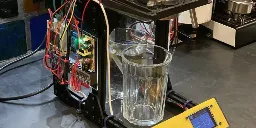
- Linux System Store in Africa; Russia; or Latin America ?
I had a person ask me the other day if I knew of any stores that sell hardware with Linux preinstalled in Africa; Latin America or Russia and I couldn't think of any. I know plenty in Europe; U.S.A. and Canada but none for those places. Do any of you know of any ? They didn't mean stores that will ship there but stores that are based there.
- NaxRiscv is a open source out of order RISC-V core written in spinalHDL (a open source hardware description language)github.com GitHub - SpinalHDL/NaxRiscv
Contribute to SpinalHDL/NaxRiscv development by creating an account on GitHub.

- MNT Pocket Reformwww.crowdsupply.com MNT Pocket Reform
A newer, smaller, lighter, more-affordable, seven-inch mini Reform laptop that remains fully open source
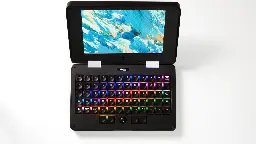
- Dasharo Update Question
I recently received my MSI PRO Z690-A DDR4 motherboard from Dasharo. It came with version 1.0 which from what I understand has a different update process than later versions. Am I correct in understanding that I need to open a Terminal and type in "flashrom -p internal -w [path] --ifd -i bios" substituting the path bit there with the actual path to the file I downloaded ? Figured I would ask first before diving in.
- Making Opensource USB C industrial camera with Interchangeable C mount lens, Interchangeable MIPI Sensor with Lattice Crosslink NX FPGA and Cypress FX3 USB 3.0 controllerwww.circuitvalley.com Making Opensource USB C industrial camera with Interchangeable C mount lens, Interchangeable MIPI Sensor with Lattice Crosslink NX FPGA and Cypress FX3 USB 3.0 controller
This post is going yet another part in the DIY camera projects which have been doing since quite some time. In this post I will showi...
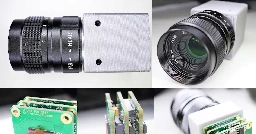
- Alibaba T-Head TH1520 RISC-V processor to power the ROMA laptop (which is based on Alibaba C910 open source processor)www.cnx-software.com Alibaba T-Head TH1520 RISC-V processor to power the ROMA laptop - CNX Software
The ROMA RISC-V laptop was announced this summer with an unnamed RISC-V processor with GPU and NPU. We now know it will be the Alibaba T-Head TH1520
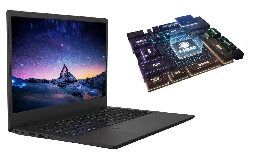
- RISC-V only takes 12 years to achieve the milestone of 10 billion cores, 5 years faster than ARM.www.cosfone.com RISC-V only takes 12 years to achieve the milestone of 10 billion cores
RISC-V only takes 12 years to achieve the milestone of 10 billion cores, 5 years faster than ARM. At the Embedded World conference held recently, Calista Redmond, CEO of RISC-V International, was pleased to announce that the number of cores in the RISC-V market has exceeded 10 billion.
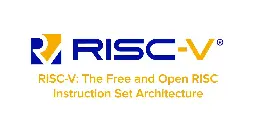
- MNT shrinks its open source Reform laptop into a 7-inch pocket PC throwbackarstechnica.com MNT shrinks its open source Reform laptop into a 7-inch pocket PC throwback
An odd laptop experiment gets even odder (and a lot smaller).
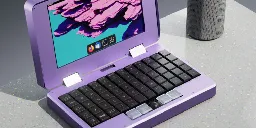
- Modoswww.modos.tech Home | Modos
Meet Modos. The World’s First E-ink Laptop Made For Reading, Writing and Thinking— Designed for a healthier relationship with technology.

- Framework laptop water damage repair attempt using partial schematic - Louis Rossmanyewtu.be Framework laptop water damage repair attempt using partial schematic
🔵 We fix Macbooks & offer free estimates. https://rossmanngroup.com 🔵 Send us your Macbook for repair! http://bit.ly/sendmacbook 🔵 We'll send you a box with a pre-paid shipping label for your repair! http://bit.ly/sendyourmacbook 🔵 We offer iPhone data recovery: http://bit.ly/2BDBX4G 🔵 We offer...
- ClockworkPi DevTerm Kit R-01: another portable open hardware risc-v computer!www.clockworkpi.com DevTerm Kit R-01 | ClockworkPi
Please NoteDevTerm R-01 is a highly experimental model and requires some experience with Linux system & FOSS. We strongly recommend all beginners to choose other models.What is RISC-VRISC-V is an open standard instruction set architecture (ISA) that began in 2010 and is based on established redu...

- Framework Laptop's mainboard is now open source and available for purchase separatelyframe.work Mainboard Availability and Open Source Release
The Framework Laptop Mainboard is now available in the Framework Marketplace!
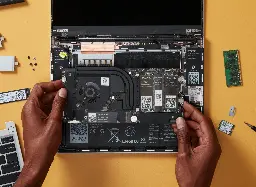
- Framework Releases Open Source Mainboard Documentationframe.work Mainboard Availability and Open Source Release
The Framework Laptop Mainboard is now available in the Framework Marketplace!
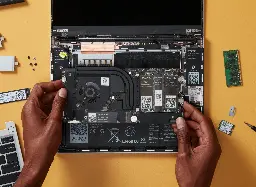
"We’re happy to share that we’ve released a GitHub repository of CAD and electrical documentation, all under an open-source Creative Commons license. In addition to 2D drawings of the Mainboard to help you design your projects, we’ve released two 3D-printable reference designs. One is a minimal VESA-mount holder that lets you attach the Mainboard to a monitor or TV, while the other is a fully featured small form factor desktop case. Both of these are easy to print on home 3D printers. Since these are open source, you are free to modify, remix, and redistribute them however you’d like to. All of this is a starting point for a broader set of open source Mainboard documentation to enable creation of fully compatible third-party Mainboards in the future."
- OpenBuilds OX CNC Machineopenbuilds.com OpenBuilds OX CNC Machine
OpenBuilds OX CNC Machine. A strong easy to build shop CNC router that can be sized to suit your needs. Many new features have been incorporated into the OX to make it a great router that is sure to inspire!

- Open Source Scan Converter (OSSC): A zero-lag upscaler for retro gaming, and currently by far the sharpest way to play analog consoles via HDMIwww.retrorgb.com Open Source Scan Converter (OSSC)
https://youtu.be/vHqT1God9vk The Open Source Scan Converter is a zero lag upscaler. At the moment, it is by far the sharpest way to play your analog consoles via HDMI, offering tons of options, 2x 480p (960p) and up to 5x 240p (1080p!). It's only shortcoming is it's not compatible with all TV's
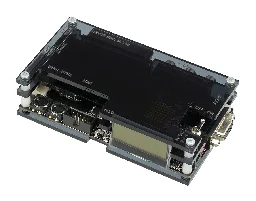
- ODrive: Open source high performance motor controllerodriverobotics.com ODrive
ODrive - High performance motor control for robotics. Open source and affordable.
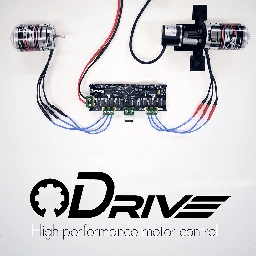
- Open19 Project versus the Open Compute Project | Datacom Solutionspaigedatacom.com Open19 Project versus the Open Compute Project | Datacom Solutions
By now, most people have heard of Open Compute which boasts membership comprised of Facebook, AT&T, Google, Microsoft, and other large data center pla...
Keep in mind that the article is kind of old, from 2017. I unfortunately couldn't find similar comparisons from more recently.
- The Cairn Mesa | Key : A mechanical, Open-Source Hardware keyboardwww.kisskissbankbank.com The Cairn Mesa | Key : a mechanical keyboard by Cairn Devices
A mechanical, Open-Source Hardware keyboard.
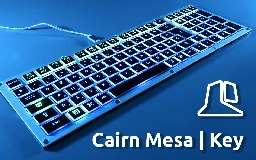
publication croisée depuis : https://lemmy.ml/post/197440
> Crowdfounding project on KissKissBankBank > BE
- ESP Wiki is looking for moderators
cross-posted from: https://lemmy.ml/post/193809
> If you are familiar with software patents and would like to moderate an excellent database of campaign material against software patents, please respond below. This post will be pinned until ESP Wiki is sufficiently moderated. > > ESP Wiki was created in 2008 as the main resource for activists, programmers, lawyers, and policy makers with the goal of abolishing software patents. In the past, it has worked as a community forum for FSF's amicus briefs to courts and has been cited by legal journals and articles. Lately it has gotten some serious updates: a new logo, a modernized theme, better categorization, brand-new custom wiki templates, etc. > > It is not required to have a legal background, but you should be at least comfortable with reading legal information. You should also have a general understanding of basic legal procedure around patent law. But even if you don't know much, this is a great opportunity to learn some interesting details about this topic. > > Do not hesitate to contact me at any point; this post will be up for a while. > > You can read more about the End Software Patents campaign in the community's description. > > Links: > * End Software Patents (main page) > * ESP Wiki
- A Verilog implementation of DisplayPort protocol for FPGAs (MIT License)github.com GitHub - hamsternz/DisplayPort_Verilog: A Verilog implementation of DisplayPort protocol for FPGAs
A Verilog implementation of DisplayPort protocol for FPGAs - GitHub - hamsternz/DisplayPort_Verilog: A Verilog implementation of DisplayPort protocol for FPGAs

- Verilog Ethernet components for FPGA implementation (MIT License)github.com GitHub - alexforencich/verilog-ethernet: Verilog Ethernet components for FPGA implementation
Verilog Ethernet components for FPGA implementation - GitHub - alexforencich/verilog-ethernet: Verilog Ethernet components for FPGA implementation

- Do closed hardware standards make it impossible to legally open source hardware that use them?
Say you're a hardware company and you want to make your motherboard design open source. Well, if your board has PCIe slots, the PCIe standard is closed source. If you want to use normal DDR DIMMs, that standard is owned by JEDEC. If you want USB, HDMI, SATA, etc, all those ports are closed standards too. Does that mean that it would be illegal for you to open source your board if it implements any of those standards, since the standards are closed and no one but the parent organizations can distribute them?
What about a CPU? Sure, RISC-V is open source, but if you want any industry standard interfaces like USB, PCIe, DDR, all of those would require controllers on the processor, which would require licenses to the standards, etc. Does that mean that we will never have a completely open source chip design unless the author also designed their own open source interfaces for basically everything?

